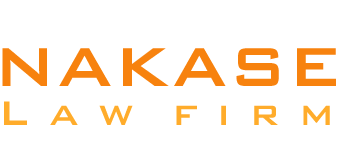Introduction
An official notification documenting an employee’s conduct or performance issues at work is called an employee write-up. It is the official start of the disciplinary procedure. It serves as an instrument for efficient administration and adherence to the law at work. Understanding the laws regarding write-ups at work ensures that both the employer and the employee are aware of the requirements and repercussions specified by providing written proof that may be consulted later.
This guide was created to help companies navigate the challenges of fair and legally compliant employee penalties by identifying the most effective procedures for fostering a productive workplace that complies with the law. We will also point out the inevitable repercussions of improperly handling the employee writing-up procedure and laws regarding write-ups at work.
Employee Rights: The Legal Underpinnings of Employee Write-Ups
A worker’s write-up is an essential part of the workplace’s disciplinary procedure, acting as a written notification to staff members on behavioral or performance concerns.
Various legal implications come with the implementation of this procedure, however. Employers have to know and support the rights of employees as stipulated in laws regarding write-ups at work in order to ensure fair treatment and ward off legal suits that may occur.
There are numerous state & federal labor laws that protect the rights of the laborer. This set of regulations that deals with matters such as discrimination, privacy, harassment, and wrongful dismissal is supposed to ensure that equal treatment is given in the working environment. Thus, it is unimaginable to overrate the importance of observing the federal & state laws. There is a disciplinary procedure that should be taken based on the construct stipulated by statutes such as the Civil Rights Act, the Americans With Disabilities Act, and the FLSA (Fair Labor Standards Act).
The write-up has to be done in a non-discriminatory manner. This means that there are no actions that can be implemented based on any legally secured concern, such as race, religion, color, sex, age, national origin, or disability. Employers have to ensure that the disciplinary procedure is applied equally to all employees to ensure that laws regarding write-ups at work are not broken.
The employment legislation provides employees with the right to privacy over their personal information. Writing of sensitive material should be handled discreetly, and only people who need it should be in a position to read it. This involves maintaining records of personnel and any paperwork relating to the disciplinary process confidential.
The whole write-up process should be documented, along with specific examples of the performance or behavior issues that led to the disciplinary measure, as well. The standards should be publicized to the workers, and the consequences of non-compliance need to be explained to them. This material has to be very true, unbiased, and does not contain any phrases that can be seen as unjust and prejudiced.
By signing the staff write-up form, an employee is agreeing to have been informed about any problem that he or she may have, even though it does not mean that he or she accepts what is said in the document. This step will assist in ensuring that the worker is told about the disciplinary process and the rights in the process, and is critical when it comes to documentation.
Getting Ready for a Write-up That Complies with the Law
For legal compliance, accurate documentation is essential. It is proof that the company took action to resolve conflicts in a consistent and equitable way. Such a detailed report can be the main line of defense on behalf of the organization in situations where foul treatment or wrongful termination is claimed under laws regarding write-ups at work.
Ensure that the write-up of your employees conforms to the current policies of the company as stipulated in the employee manual. Make sure the action you’re taking is justifiable within the parameters of your organization’s policies by reviewing the pertinent policies before creating an employee write-up form.
Fair treatment of all employees is also important, without considering their seniority, job title, or any other factor. As it keeps off accusations of bias or discrimination, this uniform practice fosters an effective working environment in which all members of staff are treated impartially and with importance. In a bid to make sure that the managers and supervisors adopt the same line of procedure when tackling disciplinary issues, HR departments play a critical role in ensuring that the same aspect is monitored.
Legal Review
In order to comply with the laws regarding write-ups at work, it is also important that the forms and procedures related to a write-up of the worker should be analyzed by HR professionals or representatives of juridical authorities. You need to remember that there are intricate and broad-based employment laws. Hence, these human resource professionals and law specialists ensure that the write-up format and procedures are compliant with the latest state, federal, and other local employment laws.
They also assist in making sure that official employee write-up forms are implemented in accordance with market best practices. Applying disciplinary measures uniformly and equitably throughout the company is made easier with the aid of a legal review. This lowers the possibility of lawsuits alleging discrimination or unjust treatment. It is also essential for preserving employee trust and creating a positive work atmosphere.
Organizations may considerably lower their risk of litigation by making sure that employee write-up papers are compliant with the law. Professionals in human resources or law also help to improve the caliber of paperwork.
Carrying Out the Write-up Procedure
- Be objective: Keep objectivity by concentrating on the data & avoiding sentimental or subjective language in the article. The matter should be factually recounted in the document.
- Add witness testimonies: If appropriate, add witness testimonies to support the incident’s specifics. This gives the document even more legitimacy.
- Summary of expected conduct and consequences: Spell out the future expectations of the employee and the consequences of failure to perform them in a clear manner. In case of more serious or recurring violations, it might imply immediate dismissal or further punishment.
- Give a development plan: Show a clear pathway to development and offer whatever may happen to be available in support of a development plan, such as counseling or training. This depicts the commitment that the company has to stimulate employee success.
- Acknowledgment by employee: The staff member should sign the write-up form to acknowledge his/her receipt. This signifies that they are sensitized to the issues and expectations of their employment, yet it does not mean that they are content with its content.
- Regular checks: Set frequent review meetings to discuss the progress of the worker. This is not only used as a progress tracker but also as a restatement of the importance of the topics discussed in the article.
The process of holding the employee meeting
Sitting with a staff member to go over a write-up is essential for the disciplinary procedure.
You must go over the write-up paper in order to make sure you are ready to go into great detail at the meeting. Also, learn the legal consequences of disciplining your employees with the intention of avoiding all comments and activities that may be taken as retaliatory or discriminatory.
At the beginning of the meeting, say that you are interested in an open and productive conversation. Make it apparent that the objective is to help the employee’s development and deal with particular problems. Give the incident’s specifics and the motivations for the article in an unbiased and clear manner. Next, talk about how the team, division, or business has been impacted by the employee’s activities. This aids the worker in comprehending the wider consequences of their actions.
Be mindful to give the worker a chance to explain their perspective. They might offer more background information or clarification that you were unaware of. Active listening is a useful skill to have during this procedure. Additionally, be ready to answer any queries or worries the worker might have regarding the disciplinary procedure or the employee write-up.
Monitoring & Follow-Up
The observation and follow-up of a staff member after a write-up is necessary not only to help him/her improve but also to make them meet the expectations. In order to achieve this, come up with consistent meetings to evaluate the progress made by the worker toward the objectives that have already been discussed.
The techniques that are used to monitor may need direct observation, the review of the job output, or feedback provided by the clients and coworkers, depending on the type of improvement that needs to be made. The trick is to gather quality performance information that is not biased.































